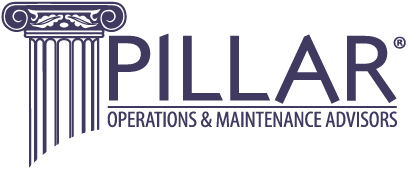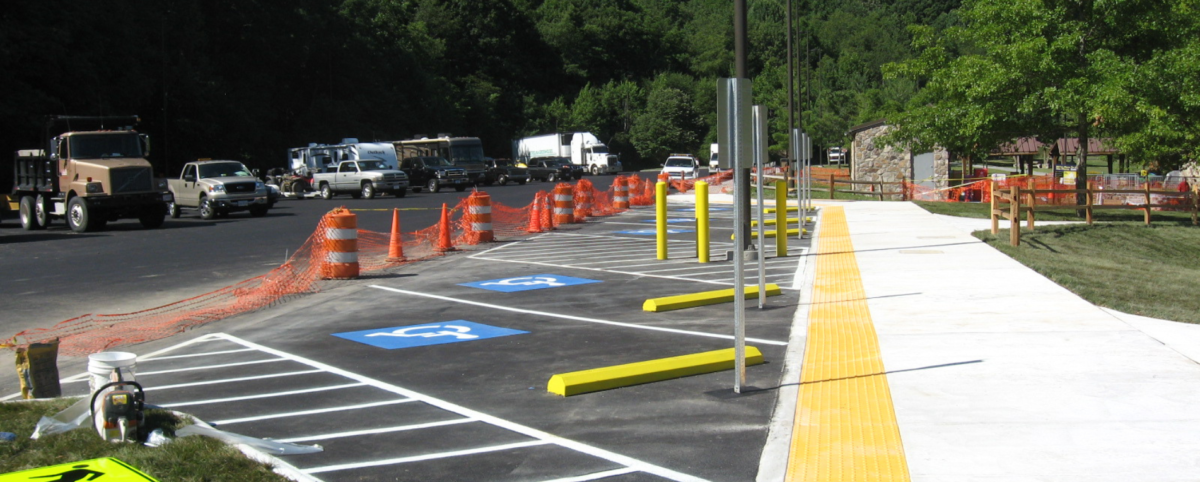Safety Rest Areas were originally designed to reduce crashes caused by driver fatigue. They’re as vital as they are complex. Rest areas contain dozens of assets that need regular maintenance and care. To add to the complexity, most rest areas were built half a century ago, without consideration of disabled motorists.
The cost of non-compliant rest areas is steep: it creates a hazard to the traveling public and leaves your department open to heavy fines. The Americans with Disabilities Act (ADA) mandates accessibility requirements on public infrastructure, including safety rest areas. While you know upgrades are critical, it can feel impossible to execute with an already overtaxed workload. If you’re struggling to upgrade your rest areas, PILLAR can help.
Are Your Rest Areas Accessible to All?
According to federal requirements, a safety rest area should, “provide facilities reasonably necessary for the comfort, convenience, relaxation and information needs of the motorist.” To ensure your safety rest areas are inclusive to the needs of all motorists, your rest area should include a number of accommodations.
Pathways and Parking: Your rest area should have a sufficient number of accessible parking spaces, proper pavement slopes of 2% or less, and pathways that are free of obstacles and wide enough to accommodate wheelchairs. Wheelchair ramps should have slopes that meet regulation requirements. It’s also important to remember that pathways with slopes steeper than a 6-inch rise require handrails.
Entrances: All stairs should include handrails. However, building codes state that anything less than three steps does not require a handrail. At PILLAR we advocate going above and beyond codes and try to avoid stairs for maximum safety. All entrances should feature automatic doors or doors that are easily operable.
Bathrooms and water: Restrooms should be wheelchair accessible and include grab bars and lowered counters. It’s crucial to ensure sink clearances and plumbing are installed to allow legs to maneuver beneath them. Stalls are required to have appropriate swing and turning clearances and water fountains should be installed at appropriate heights.
Signage: Signs should be posted at appropriate heights and include compliant reflectivity, visibility, and braille.
Outdoor facilities: Picnic tables must be accessible to provide for rest and relaxation of all motorists. Additionally, the pathway cover must be conducive to wheelchairs and walkers and cannot be comprised of gravel or stone.
Curb ramps: These are required where accessible routes have a level change greater than half and inch. They must be installed and constructed properly with the appropriate slopes and landing areas and include a detectable warning strip.
PILLAR stays up to date on all ADA requirements. When you work with us, you’ll have an expert advisor to help monitor your contractors and direct your updates to exact specifications.
Stay on Top of Your ADA Compliance
It can feel overwhelming to tackle so many upgrades at once, but with PILLAR on your side you can take control. We specialize in maximizing the lifecycle of your assets through collection, assessment, planning, and execution. Through our proven blend of human expertise and cutting-edge technology, we can efficiently inspect your rest areas and assess their condition against current ADA guidelines so you’re not left guessing about the status of your compliance. We can even help you budget with our accurate, bottom-up approach so you can plan with confidence.
ADA requirements are regularly amended to ensure that facilities and services reflect the up-to-date needs of citizens with disabilities. That means that even after updates, your safety rest areas could fall out of compliance. PILLAR stays up to date with the latest ADA regulations. We can conduct regular inspections and make recommendations for continuous updates to ensure that your rest areas remain ADA compliant and in good repair. With PILLAR on your side, your rest areas will meet or exceed current standards.
Schedule your free consultation and learn more about how PILLAR can help you streamline ADA compliance for your safety rest areas.

